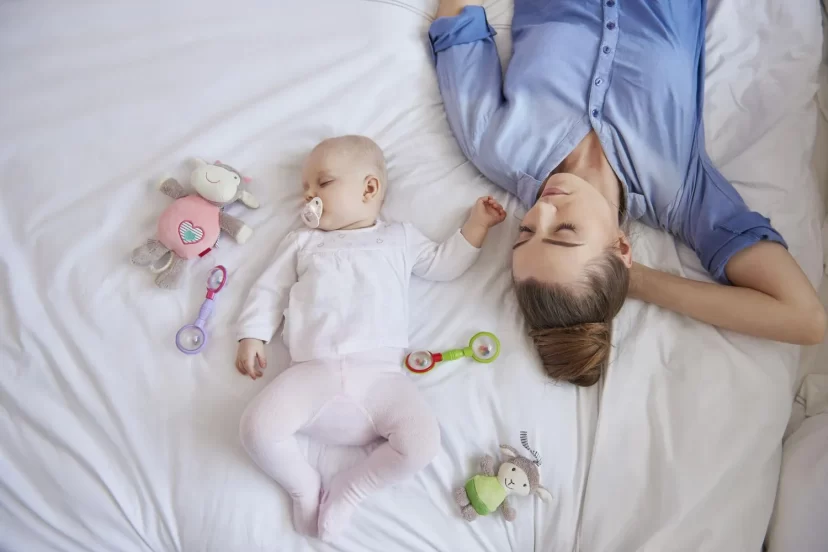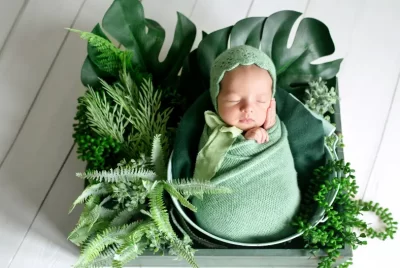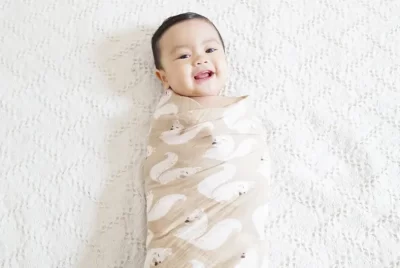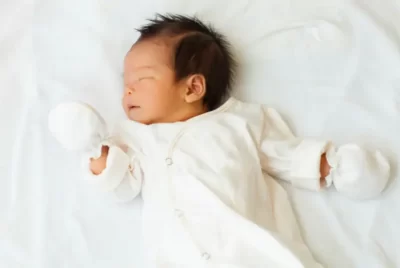10 Best Sleep Associations: To Improve Your Baby’s Sleep
We may earn a small commission for purchases made using our links (not affecting your price).
See our disclosure to learn more.
Discover the best sleep associations to improve your baby’s sleep. Creating a peaceful and consistent sleep environment is crucial for your little one’s well-being.
In this guide, we will explore a range of practical techniques that can soothe and comfort your baby, making bedtime a more enjoyable and restful experience.
From swaddling and gentle rocking to soothing scents and bedtime routines, learn about strategies to promote better sleep and support your baby’s healthy development.
Say goodbye to sleepless nights and welcome a more peaceful and rejuvenating sleep journey for your precious little bundle of joy.
Creating a Sleep-Friendly Environment
Creating a sleep-friendly environment is crucial for promoting quality sleep. Start by ensuring the bedroom is dark and free from excessive noise. Installing blackout curtains or blinds and using earplugs or a white noise machine can help create a quiet and peaceful atmosphere.
Pay attention to the room temperature as well, aiming for a cool and comfortable setting. Keep the bedroom well-ventilated and consider using a fan or adjusting the thermostat accordingly.
Decluttering the space and creating a cozy, uncluttered sleep environment can also contribute to a more relaxed state of mind. Lastly, investing in a comfortable mattress, supportive pillows, and soft bedding can enhance comfort and further optimize the sleep environment.
10 Best Sleep Associations for Babies
1 Swaddling
Swaddling is a widely recognized sleep association for babies that involves wrapping them snugly in a blanket, mimicking the cozy environment of the womb. This gentle and comforting practice not only helps promote a sense of security but also aids in reducing startle reflexes that can disturb their sleep.
Swaddling can create a calming effect, allowing infants to feel more settled and relaxed, ultimately facilitating better quality sleep. It is important to ensure that swaddling is done safely, following proper techniques and guidelines, to provide babies with a safe and soothing sleep environment.
2 Pacifiers
Pacifiers, also known as soothers or binkies, are commonly used sleep associations for babies. These small, nipple-shaped devices provide infants with non-nutritive sucking stimulation, which can have a soothing and comforting effect.
Pacifiers can help babies self-soothe and settle down, making it easier for them to fall asleep and stay asleep. They can also be useful in reducing the risk of sudden infant death syndrome (SIDS) when used during sleep.
However, it’s important to note that the decision to use pacifiers should be made in consultation with healthcare professionals, taking into account individual circumstances and preferences, as well as considering proper hygiene and age-appropriate use.
3 Sleep-Inducing Scents
Sleep-inducing scents refer to aromas that can promote relaxation and facilitate a better sleep environment. Lavender is one such scent known for its calming properties, as it has been shown to reduce anxiety and promote sleep quality.
The gentle and soothing fragrance of chamomile is another popular choice, often used in teas and essential oils to aid in relaxation. Additionally, scents like vanilla, jasmine, and ylang-ylang have been associated with promoting a sense of tranquility and helping to create a peaceful atmosphere conducive to sleep.
It’s important to note that individual responses to scents may vary, so it’s recommended to explore and experiment with different fragrances to find the ones that work best for you in promoting a night of restful sleep.
4 Soft Toys or Loveys
Soft toys or loveys can be comforting sleep associations for babies and young children. These cuddly companions, such as stuffed animals or security blankets, can provide a sense of familiarity, warmth, and security, which can help soothe and calm them during sleep.
The soft texture and gentle presence of a lovey can become an object of attachment and provide a source of comfort, especially when transitioning to sleep or during nighttime awakenings.
It’s important to ensure that the soft toys or loveys are safe, age-appropriate, and free from small parts that could pose a choking hazard. It’s also advisable to avoid placing them near an infant’s face or inside the crib during sleep to minimize any potential risks.
5 Gentle Rocking or Bouncing
Gentle rocking or bouncing can be effective sleep associations for babies and young children. The rhythmic motion mimics the movements they experienced while in the womb, providing a soothing and familiar sensation.
Rocking or bouncing can help calm an overtired or fussy baby, as it has a calming effect on their nervous system. It can also assist in lulling them into a more relaxed state, making it easier for them to fall asleep.
Whether it’s through rocking in a parent’s arms, using a baby swing, or a specialized rocking chair, the gentle and repetitive motion can be a valuable tool in establishing a sleep routine and promoting a peaceful sleep environment for little ones.
It’s important to ensure that the rocking or bouncing is done safely, using appropriate equipment and supervision.
6 White Noise Machines
White noise machines are popular sleep aids that emit a consistent, soothing sound that masks other noises in the environment. These machines produce a calming background noise that can help drown out disruptive sounds and create a more peaceful sleep environment for babies and adults alike.
The constant sound of white noise can also help lull babies to sleep by providing a familiar and soothing auditory experience. It can be particularly useful in masking sudden noises that might startle a sleeping baby, allowing them to stay asleep or fall back asleep more easily.
When using white noise machines, it’s important to set the volume at a safe and comfortable level, ensuring that it is not too loud or too close to the baby’s ears.
7 Blackout Curtains or Blinds
Blackout curtains or blinds are excellent sleep aids that block out external light and create a darkened environment in a room. These light-blocking window coverings can be highly beneficial for promoting better sleep, especially for babies, young children, and individuals who are sensitive to light.
By preventing unwanted light from entering the room, blackout curtains or blinds help signal the brain that it is time to sleep, even during daytime or when there are streetlights or other sources of light outside.
The darkness created by blackout curtains can enhance the production of melatonin, a hormone that regulates sleep, and contribute to a more restful and undisturbed sleep experience. Additionally, they can help control the sleep-wake cycle, particularly for individuals who work night shifts or have irregular sleep schedules.
8 Sleep Sacks or Wearable Blankets
Sleep sacks or wearable blankets are safe and convenient sleep associations for babies. These specially designed garments are intended to be worn over regular sleepwear and provide a cozy and secure sleeping environment. Sleep sacks help ensure that babies are comfortably covered throughout the night without the need for loose blankets, reducing the risk of suffocation or overheating. They come in various sizes and styles, typically with zipper or Velcro closures, allowing for easy diaper changes and maintaining a snug fit. Sleep sacks provide a sense of security for babies while allowing them freedom of movement for their arms and legs. They can be particularly beneficial during the transition from swaddling to regular sleepwear, helping babies maintain a consistent sleep routine and promoting a safe and comfortable sleep environment.
9 Parental Presence or Gentle Touch
Parental presence and gentle touch are nurturing and comforting sleep associations for babies and young children. The presence of a parent or caregiver can provide a sense of security, warmth, and emotional connection, creating a soothing environment that promotes better sleep.
Being near a familiar and trusted adult can help regulate a child’s emotions and reduce any anxiety or fear they may have, allowing them to feel safe and relaxed as they drift off to sleep. Gentle touch, such as cuddling, holding, or softly stroking their back, can further enhance the feeling of comfort and closeness, releasing hormones that promote relaxation and bonding.
However, it’s important to establish a balance that gradually encourages independent sleep while still acknowledging the child’s need for reassurance and connection, as this can help foster healthy sleep habits in the long run.
10 Soft Music or Lullabies
Soft music or lullabies are delightful sleep associations for babies and young children. The gentle melodies and soothing rhythms can create a calming and peaceful atmosphere, helping to relax and prepare them for sleep.
Soft music or lullabies can serve as a cue for bedtime, signaling to the child that it’s time to wind down and rest. The rhythmic patterns and repetitive nature of lullabies can have a hypnotic effect, lulling the child into a state of relaxation and promoting more restful sleep.
Additionally, the soft vocals and comforting lyrics can provide a sense of reassurance and emotional connection, further enhancing the sleep experience. It’s important to choose music or lullabies that are appropriate for the child’s age and preferences and to keep the volume at a low, soothing level to avoid overstimulation.
Establishing Consistent Bedtime Routines
Establishing consistent bedtime routines is key to promoting healthy sleep habits. A bedtime routine helps signal to the body and mind that it’s time to unwind and prepare for sleep. Start by setting a consistent bedtime and wake-up time, even on weekends, to regulate the body’s internal clock.
Prioritize activities that promote relaxation, such as a warm bath, reading a book, or listening to calming music. Avoid stimulating activities or screens close to bedtime, as they can interfere with the body’s natural sleep-wake cycle.
Creating a soothing environment with dimmed lights and comfortable surroundings can also enhance the effectiveness of the routine. By consistently following a bedtime routine, the body will become accustomed to the signals for sleep, making it easier to fall asleep and enjoy a restful night’s rest.
Conclusion
Incorporating the best sleep associations can improve your baby’s sleep. From swaddling and soothing scents to consistent bedtime routines, these practices create a calming sleep environment that promotes relaxation and better sleep quality.
By understanding and implementing these techniques, you can help establish healthy sleep habits for your baby. With these powerful tools, you can create a nurturing and peaceful sleep routine that sets the stage for restful nights!




